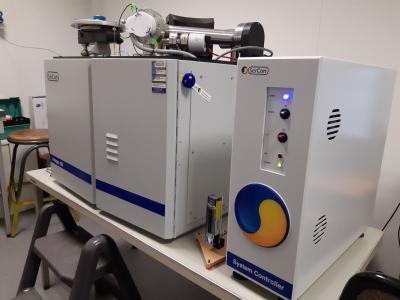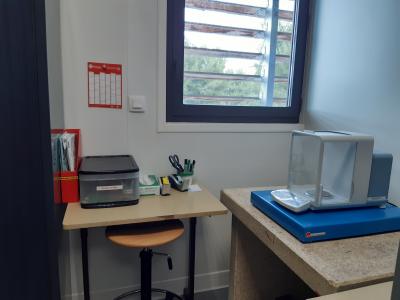Presentation
Le Pôle Éléments Biogenic (PEB) offers analyses of the components of living systems: oxygen, carbon, nitrogen, phosphorus, silicon.
The proposed protocols allow mineral or organic, particulate or dissolved forms to be determined in order to quantify the stocks of these elements in the various compartments of aquatic ecosystems.
In addition to these stock measures, the division offers the possibility of :
- quantify material flows (primary production, nitrogen assimilation and regeneration, export) by double labelling using stable isotope tracers 15N and 13C
- trace the origin of matter by determining the natural abundance δ15N and δ13C in organic matter and certain inorganic compounds.
PEB centre referents : Nicole GARCIA and Sandra NUNIGE.
(clickable names for all requests)
- The Service Analysis of Basic Parameters (PAPBIt is also open to external laboratories and provides services.
- The Service Stoichiometry of Biogenic Elements (SEBThis equipment is frequently taken on board for oceanographic campaigns.
1/ How the division works :
The PEB is located on the premises of the Mediterranean Institute of Oceanology (MIO), on the Luminy Campus, on the 1st floor of the OCEANOMED Pacific building (163 avenue de Luminy, case 901, 13288 MARSEILLE cedex 9, France).
At present, scientific responsibility for the division is held by :
- Technical manager PAPB : Nicole GARCIA – nicole.garcia@mio.osupytheas.fr (clickable e-mail)
- Technical manager SEB : Sandra NUNIGE – sandra.nunige@mio.osupytheas.fr (clickable e-mail)
The lists of staff and analytical skills are given in the appendix to the charter. (clickable links)
This centre is accessible to all MIO. It collaborates on research programmes by proposing standardised analysis procedures, according to a schedule agreed between the department manager and the programme coordinator.
The level of involvement of the cluster and its staff is established as soon as the scientific project is drawn up, and is clearly stated in the response to the call for tenders.
Finally, it responds to invitations to tender and requests for services from local authorities or external laboratories.
An analysis request form is drawn up, summarising the type and number of analyses, the scientific framework, the schedule for carrying out the analyses, the date on which the results are to be delivered and the total cost of the analyses. After reading the document, the user and the project's scientific manager agree to abide by these rules and the specifications on the request form signed by both parties.
The department has protocols detailing sample collection, transport, reception, handling, protection, storage, conservation and disposal. They are available in hard copy in the laboratory and in electronic format.
In the event of heavy analytical pressure, priorities may be defined in consultation with the platform managers. PACEM.
The proposed lists of equipment and parameters are available ICI. (clickable link)
The analysis request form to be completed is available ICI. (clickable link)
Analytical work is carried out by the division's staff. No equipment is available on a self-service basis.
2/ Analysis costs - rates :
The cost of analyses varies depending on whether they are requested as part of :
- from CNRS-INSU research programmes The budget for carrying out the scientific project is defined in consultation with the project leader. In this case, the cost of analyses (rate 1) takes into account consumables, chemical products and waste treatment, plus management costs. Details of the cost of each analysis are given in the attached summary table.
- of pesearch programmes outside CNRS-INSUThe budget for carrying out the scientific project is defined in consultation with the project manager. In this case, the cost of analyses (rate 2) takes into account consumables, chemical products, waste treatment and depreciation of the equipment used, plus management costs and samples taken by the laboratory. Details of the cost of each analysis are given in the attached summary table.
- from services This service is priced taking into account the cost of labour (rate 3). Details of the cost of each analysis are given in the attached summary table.
For the Observation Services labelled, analysis costs are covered on a flat-rate basis by the annual grants allocated to this service.
In all cases, a surcharge may be applied in the event of specific preparation of the samples to be analysed. Similarly, an expert opinion on the results obtained may be subject to a surcharge. These additional costs will be quoted.
The rates for the analyses offered by the EPB division are available here ICI. (clickable link)











